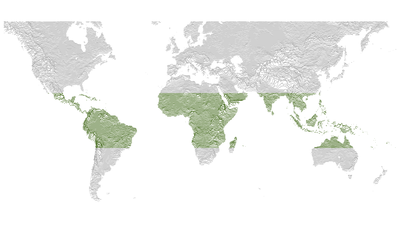
Course Overview
Tropical Rain Forests cover approximately 15% of the Earth’s land surface but contain over 50% of the world’s biodiversity. They also are home to millions of people, the source of products central to our lives, shape global climate, and are being cleared at unprecedented rates. We will try to answer the same questions asked by scientists studying rain forests: Why do they fascinate us? How have stereotypes about them permeated everything from pop culture to international relations? What gave rise to their remarkable biodiversity? What are the drivers and consequences of deforestation? Is rain forest conservation compatible with socioeconomic development? By the end of the course students will be able to:
Recognize and describe stereotypes about rain forests and their residents
Analyze rain forest tropes in art, literature, and popular culture
Discuss and evaluate hypotheses for the the origins and maintenance of tropical biodiversity
Explain & compare human history in rain forests
Review contemporary threats to rain forests
Analyze and visualize data on deforestation
Review and contrast strategies for rain forest conservation and restoration
Identify rain forests in their daily lives and formulate a personal plan for advancing forest conservation
Produce materials for communicating about rain forests to their family and peers